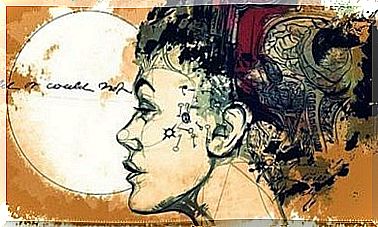Therapy Based On Mentalization

Mentalization-based therapy is a fairly recent therapeutic approach. Its goal is similar to that of many other clinical strategies: to help us better understand emotions and thoughts in order to connect them to our behaviors. In essence, it is a question of focusing attention on mental processes to use them in our favor; in this way we get more control over our actions.
Such integrative currents in clinical psychology have always been as interesting as they are useful. This particular therapy, which emerged at the beginning of the second millennium, is an example.
It brings together several concepts, from the cognitive-behavioral school to psychodynamics, passing through the systemic and ecological school. All of this constitutes a valuable and interesting resource, devised by psychologists Peter Fonagy and Anthony Bateman.
It was originally created to give a more effective response to patients with borderline personality disorder. It is currently considered an equally valid tool for treating various ailments such as depression, anxiety, eating disorders and trauma. It is also often used in addictive patients.

Characteristics of mentalization-based therapy
Before delving into the subject, it is worthwhile first of all dwelling on the term mentalization. What are we referring to when we talk about this specific dimension? Basically to our ability to understand ourselves in depth, freeing ourselves from those internal processes that, at times, lead us to act impulsively.
Anthony Bateman, creator of this therapy, defined mentalization as the process through which we can understand others, but above all ourselves, becoming fully aware of what is happening in our mind.
Let’s take a simple example. Today, returning home after work, I responded badly to my partner and this caused an argument.
Mentalization therapy helps me understand why it happened: my mood, worries and stress led me to choose the wrong words to communicate. Also, I projected an anger that I had developed in the office onto my partner.
As we can see, this type of resource can be very suitable for regulating emotions and improving relationships. Let’s take a closer look at some aspects of this tool.
Bowlby’s mentalization and attachment theory
Mentalization therapy is largely based on that psychodynamic line that originates from John Bowlby’s attachment theory.
According to this approach, the human being is able to develop a good mentalization, that is, a good control and understanding of thoughts, emotions and mental representations thanks to a secure attachment.
- If our parents provide us with a loving environment in which we can validate emotions, satisfy needs and build our identity, catalog feelings, desires, thoughts, everything will proceed in a healthy way. Little by little, we will develop coherence and self-control between actions and thoughts, between behavior and emotions.
- The creators of mentalization-based therapy highlight a disintegrated sense of self in borderline personality disorder.
- These subjects are characterized by impulsive behavior, by an evident difficulty in regulating emotions; and from encountering numerous problems managing interpersonal relationships. In them, mentalization does not work, they do not understand what is happening in their mind because in many cases they have been educated in an environment based on a disorganized and insecure attachment (Bateman and Fonagy, 2006).

What are the goals of mentalization-based therapy?
Therapy based on mentalization is based on the following idea: not having properly developed the mentalization process leads the human being to a series of difficulties such as:
- Interpersonal and social problems.
- Problems with emotional instability.
- Stress disorders, anxiety, depression, etc.
- Self-destructive and violent behaviors.
Therefore the objectives of the therapy require, first of all, a specialist trained on the following aspects:
- Guide the patient to have a better understanding of their mental states.
- Promote the regulation of emotions and behaviors.
- Promote impulse control.
- Improve social skills so that relationships are more rewarding.
- Clarify and establish a purpose in life.
- Fostering a rich, confident and motivated inner reality over which the person not only feels they have control, but also the joy of building a balanced and happy life.
- Create continuity in the autobiography. Often, the fact of having experienced a trauma, a difficulty or an addictive behavior, erects a barrier in the person. The purpose of this therapy is to break it down and create new perspectives for the future.

Is it effective?
As you can guess, this is undoubtedly an interesting approach. But what is the evidence of its effectiveness?
A study carried out at the psychology department of the University of Aarthus in Denmark shows that mentalization-based therapy is the one with the highest success rate in patients with borderline personality disorder: it is therefore the most recommended in health services. mental.
In conclusion, this is certainly a tool worth considering for a certain type of clinical need.









